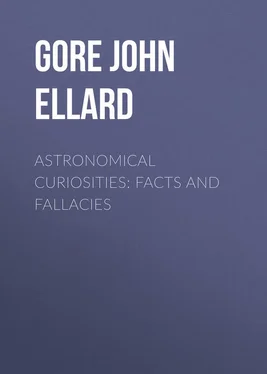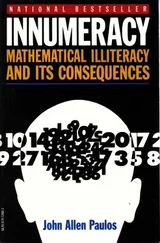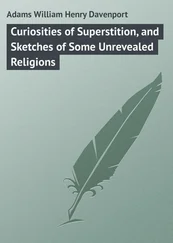John Gore - Astronomical Curiosities - Facts and Fallacies
Здесь есть возможность читать онлайн «John Gore - Astronomical Curiosities - Facts and Fallacies» — ознакомительный отрывок электронной книги совершенно бесплатно, а после прочтения отрывка купить полную версию. В некоторых случаях можно слушать аудио, скачать через торрент в формате fb2 и присутствует краткое содержание. Жанр: Физика, foreign_antique, foreign_prose, на английском языке. Описание произведения, (предисловие) а так же отзывы посетителей доступны на портале библиотеки ЛибКат.
- Название:Astronomical Curiosities: Facts and Fallacies
- Автор:
- Жанр:
- Год:неизвестен
- ISBN:нет данных
- Рейтинг книги:5 / 5. Голосов: 1
-
Избранное:Добавить в избранное
- Отзывы:
-
Ваша оценка:
- 100
- 1
- 2
- 3
- 4
- 5
Astronomical Curiosities: Facts and Fallacies: краткое содержание, описание и аннотация
Предлагаем к чтению аннотацию, описание, краткое содержание или предисловие (зависит от того, что написал сам автор книги «Astronomical Curiosities: Facts and Fallacies»). Если вы не нашли необходимую информацию о книге — напишите в комментариях, мы постараемся отыскать её.
Astronomical Curiosities: Facts and Fallacies — читать онлайн ознакомительный отрывок
Ниже представлен текст книги, разбитый по страницам. Система сохранения места последней прочитанной страницы, позволяет с удобством читать онлайн бесплатно книгу «Astronomical Curiosities: Facts and Fallacies», без необходимости каждый раз заново искать на чём Вы остановились. Поставьте закладку, и сможете в любой момент перейти на страницу, на которой закончили чтение.
Интервал:
Закладка:
The crescent shape of Venus is said to have been seen with the naked eye by Theodore Parker in America when he was only 12 years old. Other observers have stated the same thing; but the possibility of such an observation has been much disputed in recent years.
In the Chinese Annals some records are given of Venus having been seen in the Pleiades. On March 16, A.D. 845, it is said that “Venus eclipsed the Pleiades.” This means, of course, that the cluster was apparently effaced by the brilliant light of the planet. Computing backwards for the above date, Hind found that on the evening of March 16, 845, Venus was situated near the star Electra; and on the following evening the planet passed close to Maia; thus showing the accuracy of the Chinese record. Another “eclipse” of the Pleiades by Venus is recorded in the same annals as having occurred on March 10, A.D. 1002. 33 33 Nature , August 7, 1879.
When Venus is in the crescent phase, that is near “Inferior conjunction” with the sun, it will be noticed, even by a casual observer, that the crescent is not of the same shape as that of the crescent moon. The horns or “cusps” of the planetary crescent are more prolonged than in the case of the moon, and extend beyond the hemisphere. This appearance is caused by refraction of the sun’s light through the planetary atmosphere, and is, in fact, a certain proof that Venus has an atmosphere similar to that of the earth. Observations further show that this atmosphere is denser than ours.
Seen from Venus, the earth and moon, when in opposition, must present a splendid spectacle. I find that the earth would shine as a star about half as bright again as Venus at her brightest appears to us, and the moon about equal in brightness to Sirius! the two forming a superb “naked eye double star” – perhaps the finest sight of its kind in the solar system. 34 34 The World of Space , p. 56.
Some of the earlier observers, such as La Hire, Fontana, Cassini, and Schröter, thought they saw evidence of mountains on Venus. Schröter estimated some of these to be 27 or 28 miles in height! but this seems very doubtful. Sir William Herschel severely attacked these supposed discoveries. Schröter defended himself, and was supported by Beer and Mädler, the famous lunar observers. Several modern observers seem to confirm Schröter’s conclusions; but very little is really known about the topography of Venus.
The well-known French astronomer Trouvelot – a most excellent observer – saw white spots on Venus similar to those on Mars. These were well seen and quite brilliant in July and August, 1876, and in February and November, 1877. The observations seem to show that these spots do not (unlike Mars) increase and decrease with the planet’s seasons. These white spots had been previously noticed by former observers, including Bianchini, Derham, Gruithuisen, and La Hire; but these early observers do not seem to have considered them as snow caps, like those of Mars. Trouvelot was led by his own observations to conclude that the period of rotation of Venus is short, and the best result he obtained was 23h 49m 28s. This does not differ much from the results previously found by De Vico, Fritsch, and Schröter. 35 35 Nature , September 15, 1892.
A white spot near the planet’s south pole was seen on several occasions by H. C. Russell in May and June, 1876. 36 36 Observatory , 1880, p. 574.
Photographs of Venus taken on March 18 and April 29, 1908, by M. Quénisset at the Observatory of Juvissy, France, show a white polar spot. The spot was also seen at the same observatory by M. A. Benoit on May 20, 1903.
The controversy on the period of rotation of Venus, or the length of its day, is a very curious one and has not yet been decided. Many good observers assert confidently that it is short (about 24 hours); while others affirm with equal confidence that it is long (about 225 days, the period of the planet’s revolution round the sun). Among the observers who favour the short period of rotation are: D. Cassini (1667), J. Cassini (1730), Schröter (1788-93), Mädler (1836), De Vico (1840?) Trouvelot (1871-79), Flammarion, Léo Brenner, Stanley Williams, and J. McHarg; and among those who support the long period are: Bianchini (1727), Schiaparelli, Cerulli, Tacchini, Mascari, and Lowell. Some recent spectroscopic observations seem to favour the short period.
Flammarion thinks that “nothing certain can be descried upon the surface of Venus, and that whatever has hitherto been written regarding its period of rotation must be considered null and void”; and again he says, “Nothing can be affirmed regarding the rotation of Venus, inasmuch as the absorption of its immense atmosphere certainly prevents any detail on its surface from being perceived.” 37 37 Knowledge , November 1, 1897, pp. 260, 261.
The eminent Swedish physicist Arrhenius thinks, however, that the dense atmosphere and clouds of Venus are in favour of a rapid rotation on its axis. 38 38 Worlds in the Making , p. 61.
He thinks that the mean temperature of Venus may “not differ much from the calculated temperature 104° F.” “Under these circumstances the assumption would appear plausible that a very considerable portion of the surface of Venus, and particularly the districts about the poles, would be favourable to organic life.” 39 39 Ibid. , p. 48.
The “secondary light of Venus,” or the visibility of the dark side, seems to have been first mentioned by Derham in his Astro Theology published in 1715. He speaks of the visibility of the dark part of the planet’s disc “by the aid of a light of a somewhat dull and ruddy colour.” The date of Derham’s observation is not given, but it seems to have been previous to the year 1714. The light seems to have been also seen by a friend of Derham. We next find observations by Christfried Kirch, assistant astronomer to the Berlin Academy of Sciences, on June 7, 1721, and March 8, 1726. These observations are found in his original papers, and were printed in the Astronomische Nachrichten , No. 1586. On the first date the telescopic image of the planet was “rather tremulous,” but in 1726 he noticed that the dark part of the circle seemed to belong to a smaller circle than the illuminated portion of the disc. 40 40 Nature , June 1, 1876.
The same effect was also noted by Webb. 41 41 Cel. Objects , vol. i. p. 66 (5th Edition).
A similar illusion is seen in the case of the crescent moon, and this has given rise to the saying, “the old moon in the new moon’s arms.”
We next come, in order of date, to an observation made by Andreas Mayer, Professor of Mathematics at Griefswald in Prussia. The observation was made on October 20, 1759, and the dark part of Venus was seen distinctly by Mayer. As the planet’s altitude at the time was not more than 14° above the horizon, and its apparent distance from the sun only 10°, the phenomenon – as Professor Safarik has pointed out – “must have had a most unusual intensity.”
Sir William Herschel makes no mention of having ever seen the “secondary light” of Venus, although he noticed the extension of the horns beyond a semicircle.
In the spring and summer of the year 1793, Von Hahn of Remplin in Mecklenburg, using excellent telescopes made by Dollond and Herschel, saw the dark part of Venus on several occasions, and describes the light as “grey verging upon brown.”
Schröter of Lilienthal – the famous observer of the moon – saw the horns of the crescent of Venus extended many degrees beyond the semicircle on several occasions in 1784 and 1795, and the border of the dark part faintly lit up by a dusky grey light. On February 14, 1806, at 7 P.M. he saw the whole of the dark part visible with an ash-coloured light, and he was satisfied that there was no illusion. On January 24 of the same year, 1806, Harding at Göttingen, using a reflector of 9 inches aperture and power 84, saw the dark side of Venus “shining with a pale ash-coloured light,” and very visible against the dark background of the sky. The appearance was seen with various magnifying powers, and he thought that there could be no illusion. In fact the phenomenon was as evident as in the case of the moon. Harding again saw it on February 28 of the same year, the illumination being of a reddish grey colour, “like that of the moon in a total eclipse.”
Читать дальшеИнтервал:
Закладка:
Похожие книги на «Astronomical Curiosities: Facts and Fallacies»
Представляем Вашему вниманию похожие книги на «Astronomical Curiosities: Facts and Fallacies» списком для выбора. Мы отобрали схожую по названию и смыслу литературу в надежде предоставить читателям больше вариантов отыскать новые, интересные, ещё непрочитанные произведения.
Обсуждение, отзывы о книге «Astronomical Curiosities: Facts and Fallacies» и просто собственные мнения читателей. Оставьте ваши комментарии, напишите, что Вы думаете о произведении, его смысле или главных героях. Укажите что конкретно понравилось, а что нет, и почему Вы так считаете.











